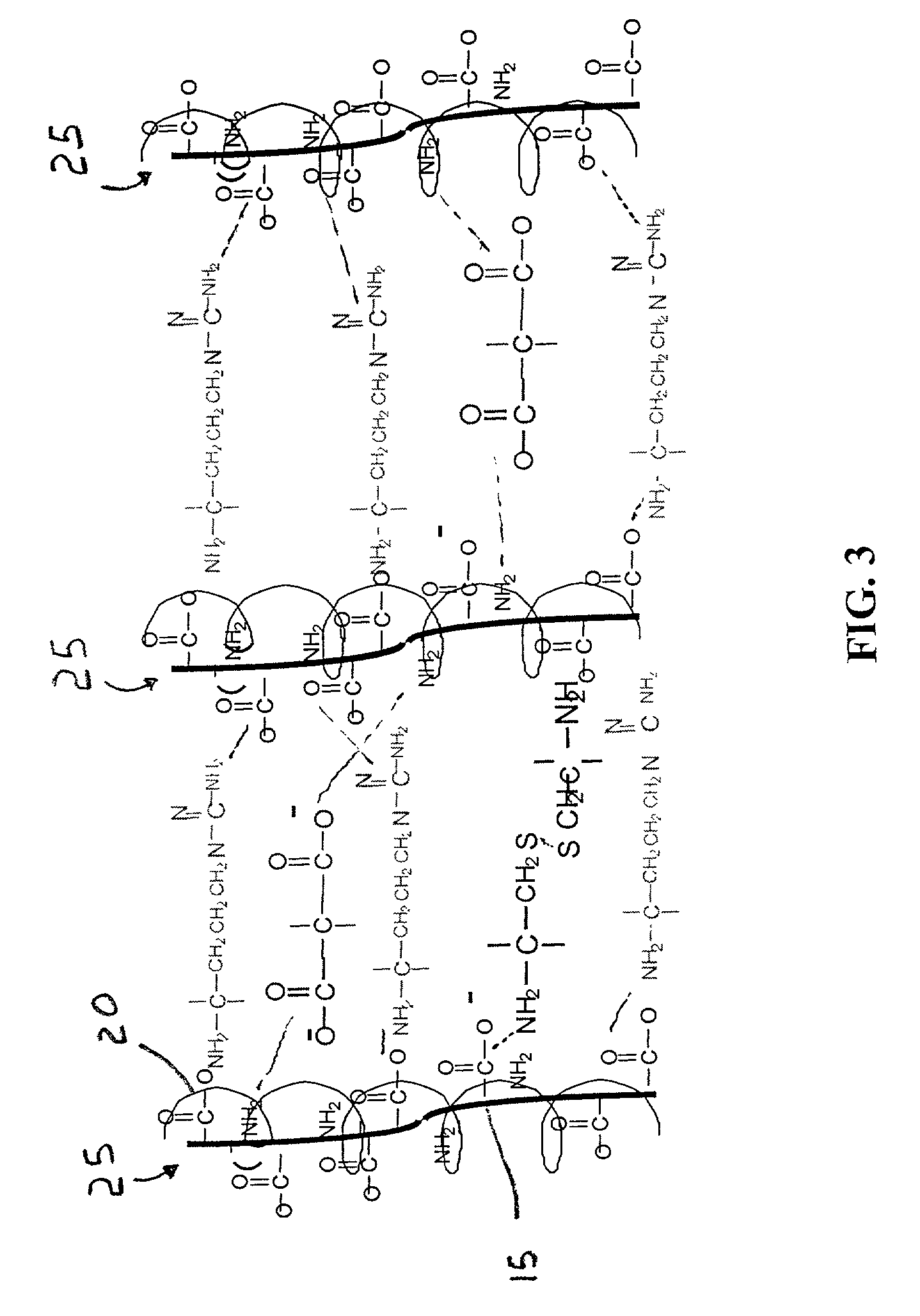Method of treating chronic ulcers
a technology of chronic ulcers and treatment methods, applied in the field of chronic ulcer treatment methods, can solve the problems of ulceration, calluses, and ulceration, and achieve the effect of treating and healing
- Summary
- Abstract
- Description
- Claims
- Application Information
AI Technical Summary
Benefits of technology
Problems solved by technology
Method used
Image
Examples
example 1
[0043]Two diabetic vascular lesions on a spontaneously diabetic, hyperlipidemic dog were treated with a single injection of the matrix (having the approximate concentrations and ingredients listed in Table 1) around the perimeter and centrally within the lesion. The total volume of injected matrix was about 5-10 ml in each lesion. One lesion was located on the right rear elbow and the other was on the right rear paw. Two days post-injection, hyperemia was evident in both lesions, but no swelling or inflammation.
[0044]The lesion on the elbow was completely closed within 6 days, with new skin and hair growth over the site of the lesion. A biopsy of the site was taken seven months after treatment. Histologic views of the site showed intact epidermis, dermis, hair follicles, and vascularization in the area of treatment. Notably, there appeared to be no scar tissue as is found with normal healing, and regeneration of the “reticular” (amorphous) morphology of the dermal extracellular scaf...
example 2
[0046]In another study, two of three rabbits with partial thickness skin ulcers on the back secondary to surgical ligation of peripheral blood vessels received matrix injections (having the approximate concentrations and ingredients listed in Table 1) circumferentially and centrally within the ulcer. After four days, the two treated lesions were greatly reduced in size and by day 21 were completely healed. Of particular note is the hair regeneration that occurred in the treated rabbits. The third rabbit with an ulcer that was not treated with the matrix demonstrated incomplete healing of the original lesion at 21 days, with appearance of a new ulcer, and no hair growth. Ulcer closure in rabbits receiving the matrix is consistent with increased vascularization, and treatment of the underlying vascular compromise. New ulcer formation in the rabbit receiving standard care resulted from lack of adequate vascularization, as occurs in diabetic foot ulcer disease.
example 3
[0047]The matrix of the invention was administered by injection to six human patients having chronic lesions that had been present for six months to twelve years. A single dose of matrix (having the approximate concentrations and ingredients listed in Table 1) was applied to multiple sites around the periphery of the ulcer and, in one case, within the ulcer as well. The amount of matrix applied was determined by ulcer size as described above. An EMLA® cream was applied prior to treatment to numb the injection sites. After treatment, a conventional ulcer dressing was applied and standard ulcer care procedures were followed. If clinically indicated, tissue debridement was conducted prior to injection. Lesion size and appearance were gauged at periodic intervals after treatment. As shown in FIG. 5, the size of the lesion was markedly reduced post-treatment in every patient. The results for each patient are described below.
[0048]Patient 103: This was the first study patient injected wit...
PUM
| Property | Measurement | Unit |
|---|---|---|
| molecular weight | aaaaa | aaaaa |
| storage temperature | aaaaa | aaaaa |
| temperature | aaaaa | aaaaa |
Abstract
Description
Claims
Application Information
 Login to View More
Login to View More - R&D
- Intellectual Property
- Life Sciences
- Materials
- Tech Scout
- Unparalleled Data Quality
- Higher Quality Content
- 60% Fewer Hallucinations
Browse by: Latest US Patents, China's latest patents, Technical Efficacy Thesaurus, Application Domain, Technology Topic, Popular Technical Reports.
© 2025 PatSnap. All rights reserved.Legal|Privacy policy|Modern Slavery Act Transparency Statement|Sitemap|About US| Contact US: help@patsnap.com



